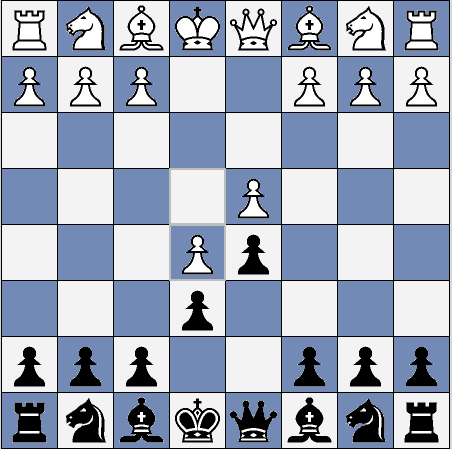French defense
The French Defense ranks second in popularity only to the Sicilian against white’s 1.e4 and is considers a very solid opening for black to play, and if played correctly you can destroy whites center a good percentage of the time.Basics
Major plan for black:- Attack whites center, the d4 pawn!
- Pawnbreak c7-c5
- Pawnbreak f7-f6
- Less center control in the beginning
- Black tends to keep king in the center as long as possible
Black keeps his king in the center, because of the pawn structure is closed, and the white pieces can't get to your king.
Major variations:
Tarrasch Variation 1.e4 e6 2.d4 d5 3.Nd2Winawer Variation 1.e4 e6 2.d4 d5 3.Nc3 Bb4






